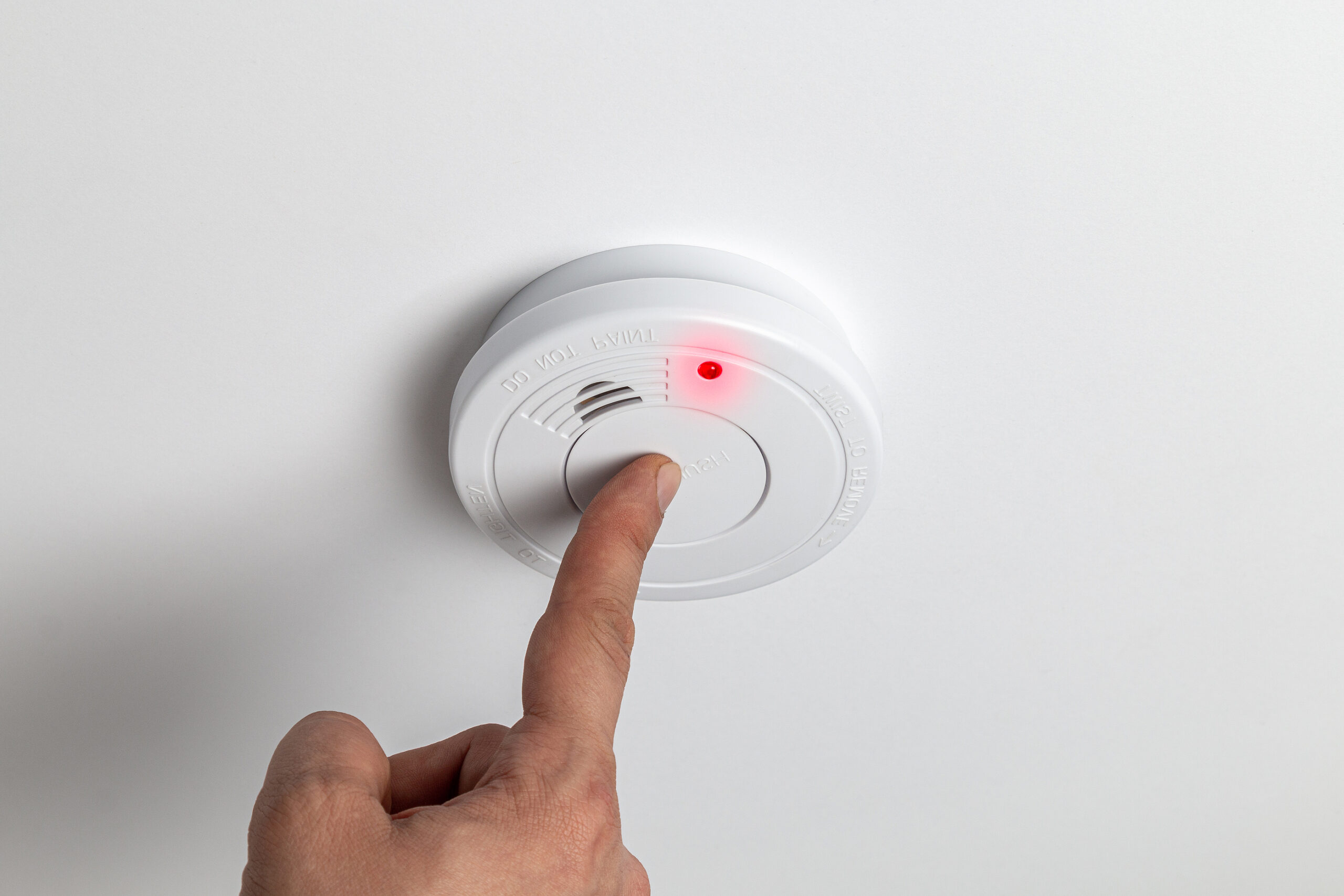Fire Extinguisher & Smoke Alarm Maintenance Tips

Fire safety equipment like smoke alarms and fire extinguishers provide crucial extra time to get out of a burning home or building, but many people don’t know how to maintain these tools.
For example, most homes (96%) have at least one smoke alarm installed, but an estimated 1 in 5 don’t work because the batteries are dead or were removed after a “nuisance alarm,” when the device goes off in the absence of a fire.
More Americans are learning how to choose and use fire extinguishers, but they might not know how to inspect them regularly to ensure they’ll function properly in an emergency.
Follow these tips to keep your home’s fire extinguishers and smoke alarms in good shape.
How to Inspect a Fire Extinguisher
Fire extinguishers can corrode or lose pressure over time, especially if they are stored next to an appliance that gets hot (like an oven, furnace or fireplace). The best maintenance practice for your home’s fire extinguishers is a quick, monthly inspection.
Here’s how to inspect a fire extinguisher:
- Review the inspection tag. The tag will tell you the last inspection date, which should be in the past month. You’ll also find the expiration date on or near the tag. Disposable fire extinguishers should be replaced every ten years; rechargeable extinguishers need to be recharged every six years.
- Check the charge indicator level. Fire extinguishers only emit enough fire retardant to put out a fire when they’re fully charged (i.e., pressurized). If your fire extinguisher has a gauge, make sure that the needle is pointed to green. If it has a green test button, press it and watch for a delay as it pops back out.
- Inspect the hose and safety pin. Look for cracks in the hose and a tether that securely ties the pin to the cylinder. If the tether is missing, someone could have used the fire extinguisher since you last inspected it, so you might need to recharge or replace it. Class A-B-C fire extinguishers empty after about 8 seconds of use.
- Look for evidence of physical damage. Corrosion, scratches, divots and dents indicate that the cylinder might have sustained enough damage to cause a slow leak. This can happen if someone drops the cylinder, leaves it in a place that’s very cold or humid, or lets oil or grease drip on it.
- Update the inspection tag. Add today’s date to the inspection tag. You can also add any damage notes that you want to follow up on during your next inspection.
When it’s time for a replacement, call your local fire station and ask if they accept expired or partially charged fire extinguishers. Because fire extinguishers are pressurized, they shouldn’t be thrown out with the rest of the garbage.
Smoke Alarm Maintenance: Testing, Cleaning and Replacement
Having a functioning smoke alarm in your home cuts your risk of dying in a fire in half, so it’s important to make sure yours are working.
Testing
All smoke alarms (whether they’re battery-operated or hardwired) should be tested at least once a month. Press and hold the test button for five seconds to ensure the alarm is still functioning properly.
If you have rooms with high ceilings, consider installing an interconnected smoke alarm system. When one alarm in an interconnected system sounds, they all sound, so it will be easier to test your smoke alarms each month. Plus, you’ll know quickly if there’s a fire in your home, no matter where it starts.
Batteries
The NFPA recommends changing batteries in older, battery-operated alarms once per year, following the manufacturer’s recommendations regarding brand and model.
Smoke alarms with non-replaceable lithium batteries are meant to last 10 years; if the device chirps, indicating a low battery, replace the entire device at once.
Cleaning
Dust and cobwebs sometimes trigger nuisance alarms when they block the sensors. To avoid this problem, vacuum or dust the sensors when you test your alarms, or set a reminder to clean them every six months.
Replacement
Many newer smoke alarm models (those made in the past ten years) can detect a wide range of fire conditions without setting off nuisance alarms. If you’ve had to remove a battery because your smoke alarm chirps when there’s no fire, consider replacing it with a new model.
If you have any questions about homeowners insurance, please call us at 877-576-5200.

